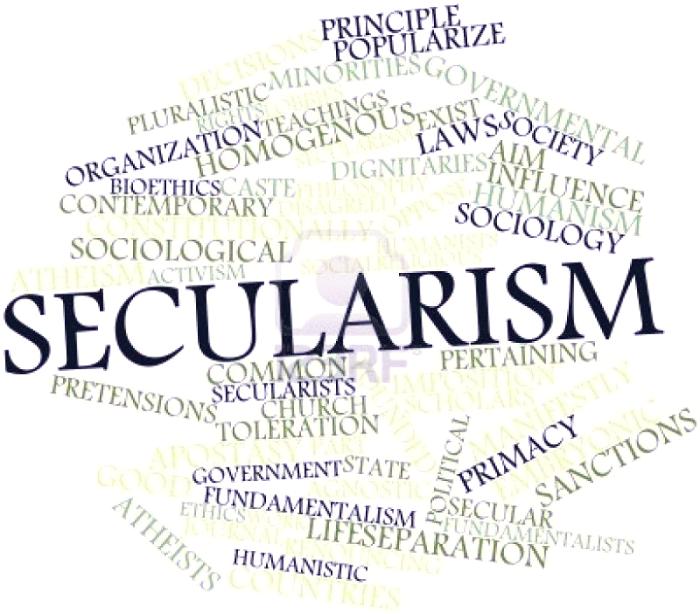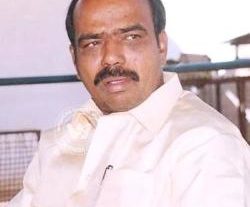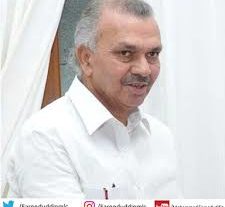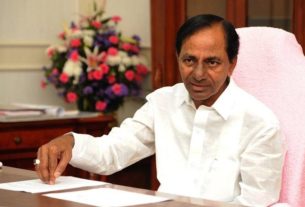Whether the promise of Secularism has been eroded by the choice of Indian electorate?
This is the question thrown up by the outcome of the 2014 general elections to the Lok Sabha which saw the National Democratic Alliance regaining power after a gap of 10 years and the BJP securing absolute majority in the Lok Sabha in its 34-year chequered history.
To see and analyse the 2014 general elections in terms of victory of communal forces or the defeat of secular parties in the country will be over-simplifying the multifold factors that contributed to the rout of the Congress-led United Progressive Alliance and the anointment of a BJP-majority government in the country.
One has to go a bit deeper in the history of consecutive general elections in the country and the change of ruling regime that these brought about. In 1971, the Congress led by Mrs Indira Gandhi had scored an emphatic victory in the wake of the Indo-Pakistan war and the birth of Bangladesh.
However, the Congress party, under Mrs Indira Gandhi, was totally routed in 1977 general elections which saw the Janata Party forming the first non-Congress government in the country. Mrs Gandhi’s downfall was brought about the excesses committed during the 15-month long internal emergency.
The instability of Janata Party government, under two Prime Ministers Morarji Desai and Charan Singh, saw the Congress regaining power in 1980 under Mrs Indira Gandhi’s leadership. The general elections held after Mrs Indira Gandhi’s assassination, in the wake of operation Blue Star, were marked by an unprecedented ‘sympathy wave’ that ensured that the Congress got the highest-ever tally of 404 seats and a vote-share of 49 percent.
Yet, the Congress lost power in 1989 general elections due to the fall-out of Bofors scam and other unpopular decisions of Rajiv Gandhi government and the coming together of opposition parties and revival of Janata Dal. VP Singh became the Prime Minister but the BJP withdrew support on the Mandal issue. The Congress propped up a government led by Chandrasekhar. The fall of Chandrasekhar regime saw the country going in for mid-term polls in 1991. In the wake of Rajiv Gandhi’s assassination, the Congress emerged as single largest party and P V Narasimha Rao became the prime minister.
The Babri Masjid demolition in December 1992 due to the inaction of P V Narasimha Rao turned the Muslim minority against the Congress. On the other hand, BJP made quick gains due to communal polarization post-Babri demolition. Atal Bihari Vajpayee became the first BJP PM after the 1996 general elections but he had to resign as he failed to garner the numbers in the Lok Sabha. The Congress propped up United Front government under H D Deve Gowda for one year and under I K Gujral for another year.
Again, the country saw mid-term elections forced by the fall of the second UF Ministry in 1998. By this time, the BJP consolidated its gains and captured power with the support of its pre-poll and post-allies. The Vajpayee government fell in 1999, necessitating yet another snap poll. The Kargil war on the one hand and poll alliances with various parties in 1999 general elections ensured a second term for Vajpayee government.
The 2004 general elections witnessed Congress staging a comeback as single largest party and forming the first UPA government with some post-poll allies. In the 2009 general elections, the Congress improved its tally and retained power with the support of its poll allies. However, over the 10-year period, the country was afflicted with economic ups-and-downs on the one hand and a series of big scams on the other.
The economic downturn, coupled with rising prices and less employment opportunities, created a situation where the people began to doubt the ability of the UPA government to revive and sustain the economic growth. This disenchantment of the people provided a god-send opportunity to the BJP to make a determined bid to grab power in the 2014 general elections.
In this scenario, the BJP worked out an elaborate strategy to catapult the party into power. Projecting the then Gujarat Chief Minister Narendra Modi as a “strong contender” for PM’s post vis-a-vis Dr Manmohan Singh was part of this strategy. The BJP also exploited the people’s disenchantment with regional and caste-based parties in various states to shore up its support base and transcend the sub-regional and caste barriers.
In a way, the BJP foresaw the 2014 general elections as a repeat of 1996 and 1998 general elections when the party could capitalize on the failures of other parties and drum up support of various castes, particularly OBCs and Dalits. The pre and post-Babri demolition poll strategies were sought to be replicated to polarize the voters on communal lines. Muzafarnagar riots and other communal flare-ups elsewhere were exploited by the BJP to drive a wedge between the two communities.
The 2014 general elections have, in fact, some parallel to the 1984 general elections. The Congress swept the polls in 1984 owing to sympathy wave after Mrs Indira Gandhi’s assassination. Even the RSS cadres had supported the Congress and the BJP could win just two seats across the country—one in Gujarat (Mehsana which elected A K Patel) and the other in Andhra Pradesh (Hanamkonda where Ch Janga Reddy trounced P V Narasimha Rao). It was a Congress wave throughout the country, barring AP where Telugu Desam Party, led by N T Rama Rao, bagged 30 Lok Sabha seats capitalizing on the parallel ‘sympathy wave’ for N T Rama Rao who was given back CM’s post after being toppled for a month. All the top BJP stalwarts, including Vajpayee, lost the elections.
There was a saffron wave in favour of BJP and its few allies in the 2014 general elections. The Congress was reduced to its lowest-ever tally of 44 seats and various regional parties got a severe drubbing. Only the regional parties in Eastern and southern India, particularly in West Bengal, Orissa and Tamil Nadu remained unaffected by the saffron wave. Smaller parties, apart from its four major allies—Shiv Sena, Akali Dal, Lok Janashakti Party and Telugu Desam, reaped rich dividends from their alliance with the BJP.
There is a suggestion or—rather a theory—that the 2014 general elections represent a ‘victory’ of the saffron brigade over the secular parties and forces in the country.
This seems to be an exaggeration as the BJP’s success at the hustings was partly due to its own efforts and partly owing to the failure of other secular and regional parties to retain the support of the people. The left parties, the Congress and most of the regional parties suffered their worst debacle.
As pointed out earlier, Eastern and Southern India (comprising 222 seats) did not yield much to the BJP which, otherwise, had a landslide sweep through Northern, Central and Western India (with 321 seats) to register its highest ever tally of 282 Lok Sabha seats which pushed up the overall numbers of NDA close to a two-thirds majority. The fact is that most of the non-BJP and non-NDA parties did not fight the 2014 general elections on the ‘secular plank’. They focused on regional and local factors and fought anti-incumbency in the states where they were in power. However, the BJP ruled states not only contained anti-incumbency but also consolidated the gains.
Thus, the Congress suffered badly across all the States in all the regions of the country. The left parties could not hold onto their seats. Many regional parties got a severe drubbing and some of them drew a blank. Only the AIADMK, Trinamool Congress, Biju Janata Dal and Telangana Rashtra Samithi resisted the saffron wave. RJD, JD (U), Samajwadi Party could get a handful of seats. BSP and DMK failed to win a single seat.
While the BJP sweep of Rajasthan, Gujarat, Madhya Pradesh and Chattisgarh was understandable, its stunning performance in Uttar Pradesh, Bihar and Maharashtra dealt a blow to other parties. The BJP seems to have reaped the whirlwind of people’s anger against the Congress and other UPA constituents and their disenchantment with performance of caste-based OBC and Dalit parties like SP, BSP, JD-U, RJD etc.
It was back to the pre-mandal era of upper caste-based politics in Uttar Pradesh, Bihar and other northern, central and western states. The OBC and Dalit parties, which held power alternatively for over two decades (since 1994) in Uttar Pradesh and Bihar, for instance, forfeited their goodwill among the people due to rampant corruption, casteism, maladministration and deteriorating law and order.
It was as much a negative vote against the Congress and other non-BJP parties as it was a positive vote for the BJP and allies. BJP’s plank of development, strong leadership and political stability, coupled with the undercurrents of its Hindutva ideology and anti-Muslim polarization, helped the party to create a monolithic vote-bank of Hindu majority in the Hindi belt as well as adjoining regions.
Caste, regional and linguistic differences were negated through a saffron surge that focused on Narendra Modi, Hindutva and a strong Bharat. The BJP had concentrated all its energies on all the 300 seats that the party had won at one time or the other since it contested its first general elections in 1984. The party had set the target of winning atleast 272 seats to gain a simple majority in the Lok Sabha.
It is the tragedy of Indian secular politics that none of the non-BJP parties wanted to take on the BJP head-on. Congress and other regional parties were too happy to try their own ‘soft Hindutva’ brand of politics.
Moreover, the organizational base of these non-BJP parties was no match to the well-oiled machinery that supported the BJP’s poll campaign—the entire workforce of the Sangh Parivar that included die-hard foot-soldiers of the RSS, Vishwa Hindu Parishad, Bajrang Dal, Durga Vahini and BJP’s frontal organizations such as ABVP, Bharatiya Janata Yuva Morcha, Mahila Wing etc.
Moreover, the poll campaign of the non-BJP parties was characterized by a defensive approach, while the BJP was on the offensive against all its rivals across the country. Congress had given up its claims to power for a third term without putting up a spirited fight. OBC parties like Samajawadi Party and JD (U) were fighting anti-incumbency, rather than combating the saffron surge.
BJP successfully weaned away Dalits, OBCs and upper castes from the other parties. In other words, the non-BJP parties could not retain their traditional vote-banks. By deploying well-coordinated strategy, tactics and manpower, the BJP and its mentor—the Sangh parivar—not only bolstered up their poll prospects but also checkmated the other parties by hitting at their base.
The so-called secular parties ran after the minority votes whereas the BJP focused on consolidating the Hindu vote bank by demolishing the caste divide. The BJP’s success in UP, Bihar and other states rendered the so-called minority vote-banks totally redundant. The 18.5 percent Muslim vote in UP was hopelessly fragmented among SP, BSP, Congress and RLD. Similarly, in Bihar, the 16.5 percent Muslim vote was split among the JD-U and RJD alliance. In Rajasthan, Gujarat, Maharashtra, Madhya Pradesh and Chattisgarh, it was consolidation of Hindu vote against the minority vote banks.
The BJP and NDA’s resounding success in the 2014 general elections has adverse impact on the Muslims as well as Christian and Buddhist minorities in the country because it represented an unprecedented disempowerment of the minorities. The Muslim representation has hit an all-time low in the 16th Lok Sabha. Only 23 Muslim members were elected from across the country. They include 8 from West Bengal, 4 from Bihar, three each from Jammu & Kashmir and Kerala, 2 from Assam and one each from Telangana, Tamilnadu and Lakshwadweep.
There is no representation of Muslims from 22 States and 6 Union Territories. For the first time, not a single Muslim MP was elected from Uttar Pradesh. Big States like Andhra Pradesh, Chattisgarh, Gujarat, Haryana, Jharkhand, Karnataka, Orissa, Punjab, Rajasthan, Madhya Pradesh, Maharashtra, Uttarakhand and Delhi, as well as 9 other smaller states and 5 union territories, have no representation of Muslims in the 16th Lok Sabha.
The Indian Constitution confers the right of adult franchise on every citizen. Nobody can disenfranchise the Indian citizens, whether they are Muslims and other minorities. However, the BJP and allies have shown that without disenfranchising the Muslims and other minorities, they can dis-empower them by denying them tickets to contest the polls on the one hand and by ensuring the defeat of minority candidates fielded by other parties.
Now, the time has come for all political parties, as well as all secular-minded Indians, irrespective of their community, to ponder over the future of the minorities in this country if the Hindutva forces further consolidate their base to entrench themselves in power for many more years to come. Indian democracy will become non-inclusive if one –sixth (16.5 percent) of the country’s population, comprising Muslim, Christian and Buddhist minorities, remains under-represented in Lok Sabha, the House of the People.
It is not merely a question of adequate representation for the minorities. It is about the essence of Indian democracy. The preamble to the Indian Constitution rightfully proclaims “We, the people of India, having solemnly resolved to constitute India into a SOVEREIGN SOCIALIST SECULAR DEMORATIC REPUBLIC and to secure to all its citizens JUSTICE, social, economic and political, LIBERTY of thought, expression, belief, faith and worship, EQUALITY of status and of opportunity and to promote among them all FRATERNITY assuring the dignity of the individual and the unity and integrity of the Nation.”
It is the interest of everyone to ensure justice and equality to the minorities by ensuring that they are well represented in the Parliament. If Justice and Equality are denied to the minorities in the matter of representation in the Parliament and State Legislatures, this would mean that India would no longer remain a Secular polity but turn into a Hindu Rashtra. The minorities cannot be left to the mercy of Hindutva forces as long as Indians have abiding faith in their nation’s Constitution. There is a challenge both to the minorities and the Indian polity to preserve and promote the country’s secular ethos and to make every community an equal partner in the nation’s progress and prosperity.



